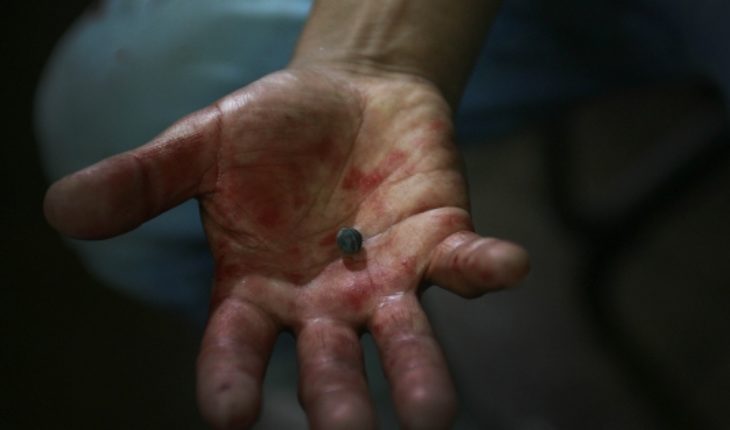The legal head of the National Institute of Human Rights (INDH), Rodrigo Bustos, again addressed the controversy over the composition of the pellets used by Carabineros in the demonstrations during the outbreak so again called on the Government to comply with international standards in this area.
“Beyond composition, riot shotguns have to be used in accordance with international human rights standards and in accordance with Carabineros’ protocols, which we believe have been repeatedly breached in the demonstration,” Bustos said. The placement by the chief legal officer of the INDH comes after the Government again insisted that the composition of the pellets used in the protests in the context of the social outburst is rubber, in a sharp response to the Office of the High Commissioner Human Rights Organization (UN), following the agency’s “urgent appeal” on 5 November, due to actions by members of the Armed forces and Carabinieri against the civilian population. This is despite a report by the University of Chile that pellets have 20% rubber and 80% barium sulfate, lead and silicon.
“It is assumed that pellets and riot shotguns can only be used since November 10, when there is a risk to the life of Carabineros or civilian personnel. However, we believe that it has been used much more indiscriminately and we have continued to have cases of people injured and people with eye injuries from the use of this type of weaponry,” he added.
Along with expressing concern about the composition of the pellets, Rodrigo Bustos also requested that the Prosecutor’s Office be able to have an international expertise “where it is clear what is the composition of this type of munitions”.
Finally, Bustos called on the Government to report on any new reports it might have on this matter.
Restrictive use of deterredive elements
On the other hand, the head of the INDH in the Region of Valparaíso, Fernando Martínez, referred to the Commission on Human Rights, Nationality and Citizenship of the Senate, the possible acquisition by Carabineros of devices that cause annoying noises and pain intense in his ear for the deterrence of protesters, and he recalled that there are standards developed by international human rights protection systems for the use of these artifacts which, although not lethal, can cause harm to people.
“In that sense the criterion and the standard of international human rights law is that the use of any artifact that has deterresive effects on public order has to be restrictive,” said Fernando Martínez.
Martinez stressed that the INDH has shown that “when it has been discussed judicially about these facts, it seems that the guidance that has been raised by State agents is that certain elements, such as the water in the carriage, release water that it has CS or other components that can cause inflammation or other lacerations, it would not have permanent effects, but the damage to health is not only permanent, there is also health damage that are transient and these also cause psychological damage.”
From that point of view, Martínez added that, although all cases must be analyzed on their merit, human rights violations can exist when the damage that is generated is permanent but also when it is transient in nature.
The CHIEF INDH of Valparaiso also pointed out to the parliamentary body that “the National Institute of Human Rights will insist that the State comply with its obligation to establish clear regulations regarding the use of these deterresive elements and supervise compliance with protocols, standards and standards for the use of force.”
translated from Spanish: Nearly three months after the outbreak, INDH urges the State as on day one to meet international standards on deterresive
January 9, 2020 |





